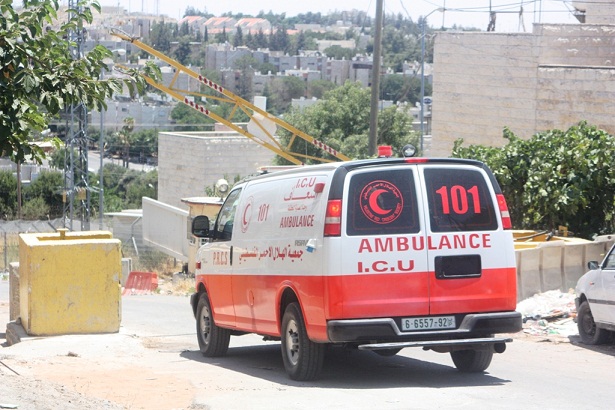
Despite the tight blockade imposed by Israeli occupation forces on H2 area in Hebron, the PRCS’ EMS Station has started providing services to Palestinians especially in Wadi Al Ghrouss, a neighborhood where the blockade is the fiercest.
More than 7000 Palestinians live under a state of siege in Hebron where their every movement depends on the whims of soldiers manning checkpoints that separate H2 area from the rest of the city controlled by the Palestinian Authority.
As most Palestinians are forced to leave their cars on the other side of these checkpoints because of delays and denial of access, they can no longer use these cars to transport the sick and wounded out of H2 area. So in 2011, following 2 years of negotiations through the International Committee of the Red Cross (ICRC), PRCS was allowed to open an EMS station in this area to provide emergency medical services as well as awareness-raising activities to Palestinians.
According to Dr. Hijazi Abou Meyzer, Director of the EMS Station in Hebron Governorate, “Hebron was divided into two zones due to Israeli occupation practices. H1 area is controlled by the PNA while H2 areas, which includes the Old City with its 40 000 Palestinians, remains under Israeli occupation control. Israeli forces prevent Palestinians from entering sieged areas without prior coordination. These restrictions used to apply to ambulances too, limiting their freedom of movement and preventing them from fulfilling their humanitarian duty in most cases. In order for an ambulance to enter this area, prior coordination had to take place with the Israelis through the ICRC. As this required at least half an hour, many Palestinians stopped calling ambulances and headed on foot to checkpoints where they were transported by car to hospital. However, now that the EMS Station is open, the ambulance dispatcher services receive a greater number of calls with better services provided: while 400 Palestinians received such services in 2011, around 100 services were provided on a monthly basis on average in 2012. In addition to EMS services (including services in the field and transporting patients to hospitals), PRCS organizes EMS awareness-raising courses targeting the local population in an area where daily attacks are committed by settlers against Palestinians”.
According to Radwan Al Ja’abari, an Emergency Medical Technician (EMT), “ambulances were in the past delayed at checkpoints for 3 hours while EMS teams were harassed by settlers. However, the EMS Station now enables us to reach the sick and wounded more quickly and to provide better humanitarian services. The fact that ambulances operate around the clock in Wadi Al Ghrouss, an area under siege, made Palestinians feel safer and made them turn more often to PRCS for emergency services”, he said.
Ahmad Zaloum, who lives in the area, confirmed this. “In the past we were reluctant to call ambulances because they were delayed on checkpoints, so we transported patients on foot to the nearest checkpoint and from there we took a car to the hospital. But now we prefer to call a PRCS ambulance which can reach us very quickly”, he said.
Ali Al Osaily, who also lives in Hebron, lauded EMS courses provided by the EMS Station which is located in the heart of the sieged area. “Palestinians are in great need of such services given the incessant attacks committed against them by settlers”, he said.